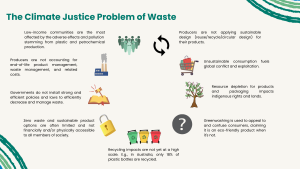1. Aboriginal and Torres Strait Islander climate justice
Climate justice cannot be achieved without Aboriginal and Torres Strait Islander Peoples’ leadership. As the original caretakers of the land, Aboriginal and Torres Strait Islander Peoples hold deep, enduring knowledge tied to Country. Addressing climate injustices requires caring for Country. Aboriginal and Torres Strait Islanders culture offers a holistic approach, recognising the interconnectedness of Country, people, and culture. This perspective ensures climate justice action does not perpetuate colonial exploitation but rather promotes healing for both people and Country.
Embedding Aboriginal and Torres Strait Islander knowledges and governance is not optional—without it, climate justice solutions are incomplete. Climate justice demands a shift to centre Indigenous voices, recognising their leadership as essential to creating just outcomes rooted in respect for all living beings.
CSOs need to reach out to their local Aboriginal and Torres Strait Islander communities to build relationships and work together to collectively challenge waste injustice and climate injustices.
For guidance visit: Engaging Aboriginal and Torres Strait Islander Peoples in Climate Justice Work within Community Service Organisations
2. Why is waste a climate justice issue?
The accumulation of waste poses severe consequences, such as pollution, resource depletion, and climate change on people and Country. Waste poses a risk via the release of greenhouse gas emissions, pollution, resource depletion and biodiversity loss. Food waste, in particular, releases methane in landfills, which heats the atmosphere faster than carbon dioxide. Other types of waste, such as plastics, do not break down, and other types of waste can release toxic materials (Source: Zero Waste Europe).
To understand why we have so much waste in our world, it is important to look at the unfair systems that allow waste and pollution to thrive. In these unequal systems, some groups and Country end up suffering the consequences of decisions made by people in power.
This inequality and climate injustices affect specific marginalised communities more than others. Recycling waste is often sent to other countries, especially in the Global South, where it’s often not handled properly (Source: Zero Waste Europe).

Understand false climate solutions
Amidst the urgency of combating climate change, an abundance of proposed solutions emerge, yet not all are as they seem. In the labyrinth of environmental discourse, there exist what some term ‘false climate solutions’—ideas and actions that purport to address the crisis but ultimately fall short, perhaps even exacerbating the very problems they aim to solve. From greenwashing to misguided policies, these solutions present themselves with all the trappings of progress, only to unravel upon closer examination. In this discourse, we delve into the complexities surrounding false climate solutions, probing the nuances that demand our scrutiny and discernment in the pursuit of a truly sustainable future.
Visit: False climate solutions and undermining tactics
Understanding waste management
Producing new packaging, regardless of its type, demands substantial energy for manufacturing and transportation; while it is often encouraged for various forms of waste, it can also release harmful toxic pollutants into the environment, adversely impacting both communities and wildlife through contamination of air, water, and soil (Source: Environmental Paper Network).
What is the best way to reduce waste?
Zero waste serves as a climate change mitigation strategy, emphasising the importance of designing products with extended life cycles that prioritise reusability or, at a minimum, recyclability.
What is the problem with zero-waste?
Zero-waste is a climate solution. Using fewer resources and placing a strong emphasis on reusing and repairing should be a top priority for society, and the approach we take in doing so is equally significant. The zero-waste movement, which encourages reduced consumption, is paradoxically now being used to market new “innovative” zero-waste products and solutions. Consequently, a zero-waste lifestyle has shifted its focus away from reduction and, instead, revolves around a distinct form of consumption, often involving costly and “luxurious” reusable alternatives to conventional products.
The mental load of zero-waste from the private to the public sphere
The mental load is a term that describes the constant cognitive and emotional demands, unseen and unrecognised responsibility of extra work, including the planning and management of tasks that often fall on women’s shoulders. In the article The Mental Load of Zero-Waste, you can find out more about the related cognitive, emotional and physical when engaging in zero-waste lifestyles and eco-sexism. The article also highlights that in pursuing zero waste, it’s crucial to recognise that this isn’t solely a personal endeavour; it requires coordinated efforts by public authorities guided by legal structures. Advocating for the federal government to prohibit the production and distribution of non-essential single-use plastics while demanding that companies take full responsibility for their products’ life cycles. It’s about pushing companies to prioritise reuse and deposit schemes. Rather than placing the burden on women to fill mason jars, the focus is on pinpointing and dismantling power systems for a more inclusive and sustainable approach to waste reduction that involves everyone.
As the issue of plastic waste gains more attention and popularity, there has been a prominent push in mainstream media to promote waste reduction as a personal lifestyle goal, often depicting it as something achievable primarily by able-bodied, middle-class white women. The excessive focus on individual choices is significant, as it highlights the privilege associated with having the option to select where and how frequently one shops, as well as the time to purchase unpackaged food from various stores and markets. The zero-waste lifestyle, as it is frequently portrayed, is simply unattainable for many individuals.
What can we do about it? What really works?
We should prioritise universal design and products that are accessible, affordable, and readily accessible to everyone. The most effective solutions are not uniform or everlasting; instead, we should be transitioning to packaging-free and reusable packaging options while adopting a circular approach to eliminate waste and maximise material circulation. Companies, not just consumers and legislators, must play a substantial role in ensuring the success of reusable packaging, minimal packaging, and other sustainable packaging methods.
Waste in Australia
3. Take action to drive change
In the world of waste management, there are many different groups involved, like regular people who use products, workers who deal with waste, governments, companies that make and sell things, families near dumpsites, and community organisations tackling waste issues. This complexity means there are many chances to speak up and make a difference through advocacy. You can connect with people who have the power to make decisions and collaborate with allies who share your goals. So, when you embark on your advocacy journey in the world of waste, think of it as a way to not only take action but also to shape a kinder, more responsible, and sustainable world for everyone.
The Tearfund website describes how to clean up the system and advocate for zero waste
Step 1: Define what needs to change
Watch The Story of Stuff, The Story of Electronics, Solving Plastic and The Story of Change to help you determine what needs to change.
Step 2: Choose advocacy approaches
- For example, government regulations hold manufacturers accountable for end-of-life product handling and companies designing longer-lasting and repairable products and packaging.
- For example, better waste management can be achieved by local governments implementing waste collection and setting reduction or recycling targets.
Step 3: Consider advocacy strategies to drive the desired change.
- Options include direct engagement with decision-makers, mobilising the public through campaigns, working with the media to raise awareness, and forming coalitions or networks with shared goals.
- Combining these approaches can be effective, like presenting decision-makers with petitions showing public support for change.
Step 3: Involve the local community
- Recognise the importance of involving the local community in your advocacy strategy to enhance its effectiveness.
Step 4: Link your action and advocacy to key international policies on waste
- Sustainable Development Goals (SDGs) address waste in the context of health, decent work, and responsible consumption and production.
- The Paris Agreement commits countries to limit global warming and emphasises waste reduction’s impact on greenhouse gas emissions and energy conservation.
- The Basel Convention aims to prevent the movement of hazardous waste from developed to less developed countries.
4. Learn more about waste management, policies and concepts
Boomerang Alliance: 10 GUIDING PRINCIPLES
The Boomerang Alliance has identified 10 key principles that need to be included in Australia’s mandated national product stewardship scheme.
- Prioritising Avoidance and Reduction
- Best Practice Eco-Design of Products
- Mandated Standards
- Extended Producer Responsibility (EPR) across Whole of Life Cycle & Supply Chain
- Mandatory National Targets and Obligations
- Development of Secondary Markets
- A national scheme managed under Commonwealth legislation
- A standardised monitoring, compliance, and enforcement regime
- Commitment to continuous improvement
- Consumer Education and Awareness
National Packaging Solutions
National actions are required to achieve a best-practice circular economy for packaging:
(Source: Fact Sheet: The packaging solution – Boomerang Alliance)
Waste concepts
What is Extended Producer Responsibility (EPR)?
The EU has for more than two decades assigned some of the responsibility for end-of-life product management to producers and, in doing so, provided a strong incentive for manufacturers to design products in a way that minimises materials use and facilitates repurposing and more effective recycling of the products. It also lessens the burden on local governments. This approach is referred to as “extended producer responsibility” or EPR.
What is a Circular Economy?
According to the Ellen MacArthur Foundation and its website Circular Economy Introduction and Overview, “a circular economy is based on the principles of designing out waste and pollution, keeping products and materials in use, and regenerating natural systems.”
What is the Sharing Economy?
The sharing economy is a socio-economic system in which individuals or organisations share access to goods, services, resources, or information, often facilitated by technology platforms. It promotes the efficient use of assets and encourages collaboration among individuals for mutual benefit, resource efficiency and waste reduction.
What is Zero Waste?
Zero waste is a sustainability concept and lifestyle that aims to minimise the generation of waste by reducing, reusing, recycling, and composting as much as possible, with the ultimate goal of sending little to no waste to landfills or incineration. It encourages responsible consumption and waste reduction practices to lessen environmental impact and conserve resources.
What is Cradle to Cradle?
Cradle to Cradle (C2C) is a design framework that promotes environmentally responsible product and systems design. It focuses on creating products and processes that are not only sustainable but also regenerative, ensuring that materials and resources are continuously reused in a closed-loop system, thereby minimising waste and environmental harm.
State and national waste advocacy bodies
Boomerang Alliance (add description)
Australian Packaging Covenant Organisation Ltd.
Economic Regulation Authority of Western Australia (ERA)
Planet Arc (also has a newsletter)
Additional resources:
Zero Waste is a Climate Change Solution
Addressing the Environmental Justice implications of waste
5. Waste reduction through ethical climate justice procurement
The first two sections of this resource have highlighted that challenging the waste and climate justice issues requires work at the root cause of the problem and on a structural level. CSOs can actively be involved in driving change on the supply side through producer accountability and policy change. The following steps can help organisations to ensure ethical climate justice procurement.
Step 1: Assemble a waste reduction & ethical climate justice procurement team
Invite team members that have procurement related roles and initiate an ethical climate justice procurement team. The team will review current practices as below and engage in ethical climate justice procurement advocacy.
Step 2: Develop a waste reduction & ethical climate justice procurement policy
Reflect with your team about the principles required in order to establish an organisational waste reduction & ethical climate justice procurement policy.
Use your organisation’s climate justice principles to help you reflect and develop your waste reduction & ethical climate justice procurement policy.
Step 3: Assess organisational procurement against your ethical climate justice procurement policy
Use your Waste Reduction & Ethical Climate Justice procurement policy to undertake a procurement audit or review to identify the areas in which your organisation needs to change their procurement practices.
Step 4: Identify ethical climate justice procurement issues and plan actions to address those
Reach out to your suppliers and demand accountability
Identify alternative procurement options.
Step 5: Ensure ethical climate justice procurement is upheld as organisational values and culture
Refuse/Reduce: Buy Carefully
- Slow down the rate of buying new items. Have a prioritisation process to assess “Do we really need it?” “Can we manage with what we have for now and still deliver a quality service?”
- Use or Minimise single-use plastics at home, in the office and at work events. An example of this could be to limit or eliminate the use of disposable marketing items often used as free giveaways.
- Rent/borrow items that will be used once or infrequently- or pool together with other community organisations to share items you may only use less frequently (Tool Libraries, Sharing Economy)
- Buy second-hand where appropriate
- If you must buy new, look for longer-lasting items that can be fixed and component parts that can be disassembled/recycled at the end of their life.
- Buy from companies committed to sustainable practices.
- Minimise printing through the use of digital agendas, minutes and handouts.
Recycle/Re-use everything that can be recycled:
- Recycle standard recyclables and ensure proper sorting to maximise recyclability
- Provide for recycling of tech/batteries/lightbulbs
- Participate in the WA Containers for Change scheme to recycle drink containers
- Utilise paid services to turn food waste into compost or worm castings.
- If you have the ability to process food/green waste onsite, do so
- Incorporate compost, etc., into food gardens onsite.
- Partner with community gardens and urban farming organisations to make use of food/green waste
Read more
Sustainable Procurement Guide – A practical guide for Commonwealth entities
Australian Government, this guide provides insights into transforming Australia’s waste into resources, allowing a design and circular economy infrastructure for goods and services to be continually used, reused, recycled and reprocessed.
WAs Waste Avoidance and Resource Recovery Strategy 2030
WA Waste Authority, this document is WA’s strategy for waste avoidance and resource recovery. It includes statistics, targets, approaches, strategies, and incentives.
Waste Management Plan
James Cook University, Australia, this resource provides an example of a Waste Management Plan.
Audit Resources

